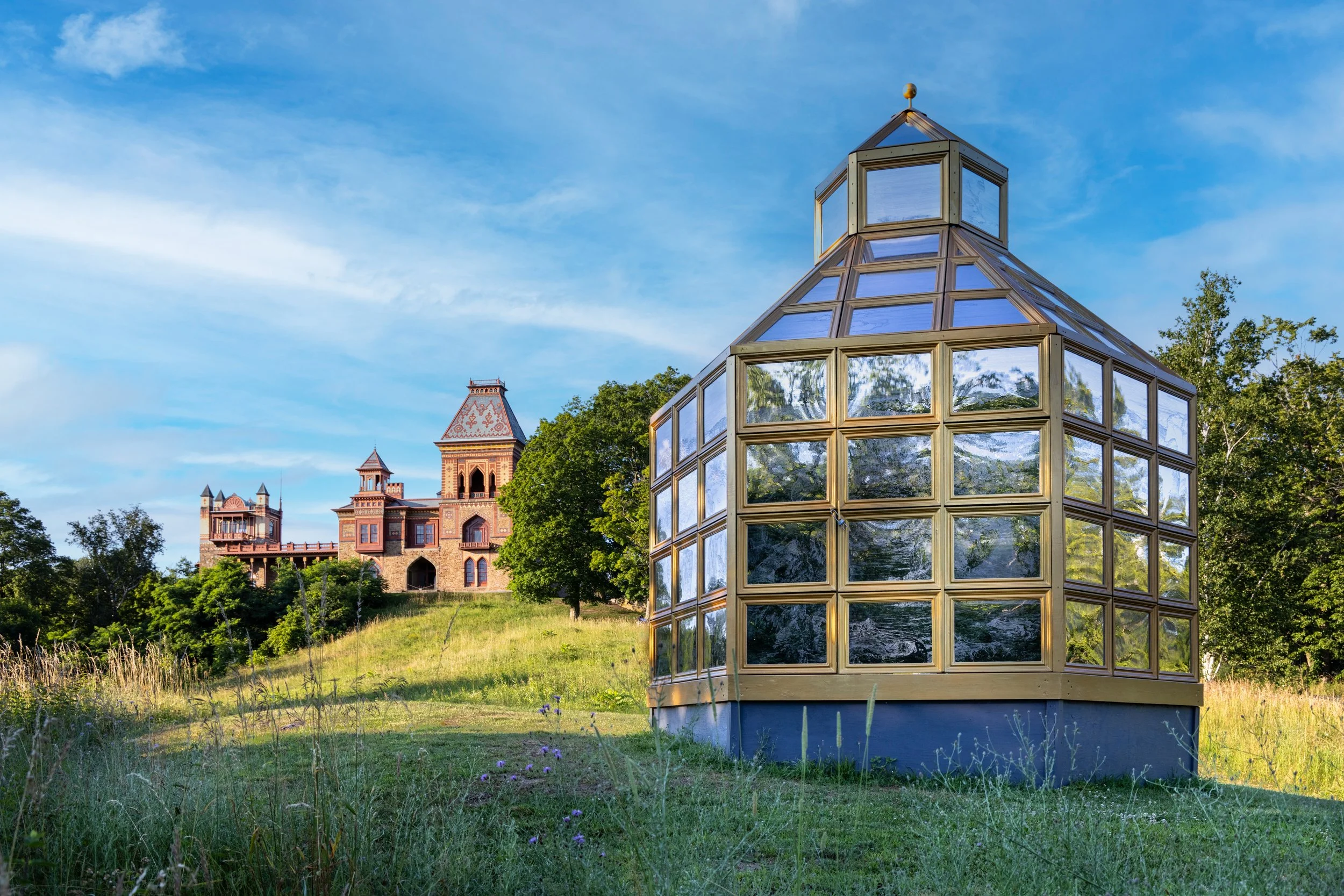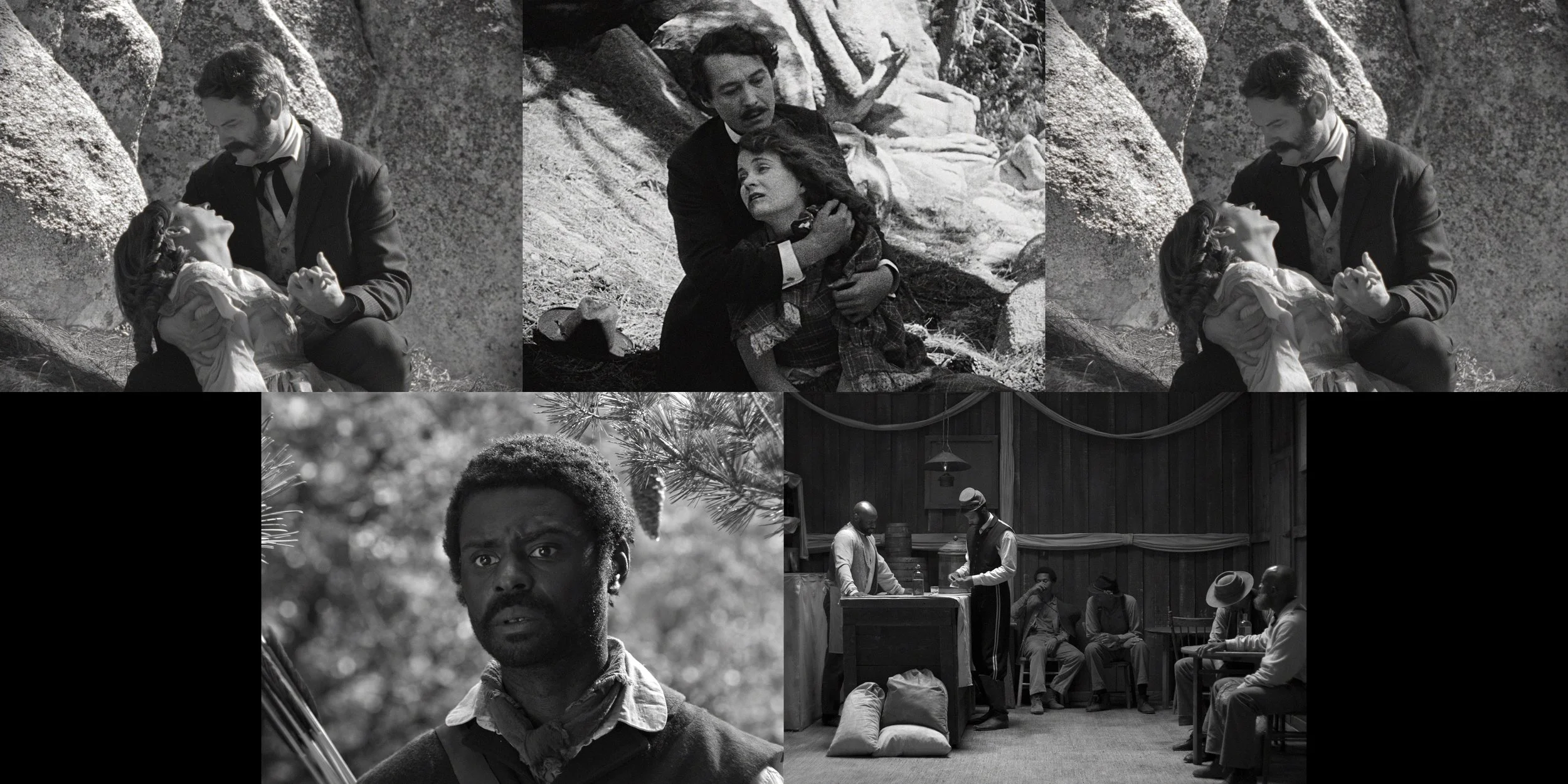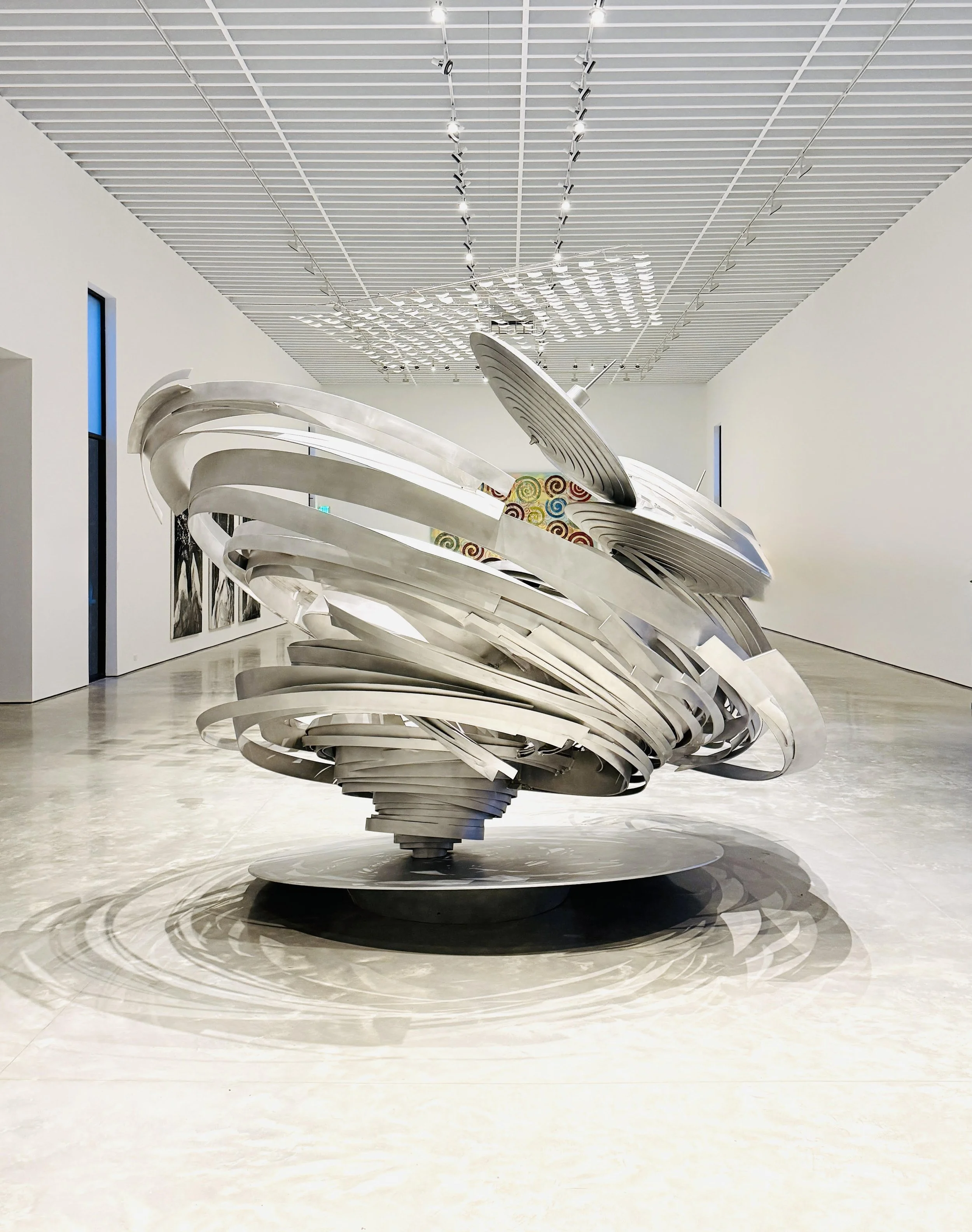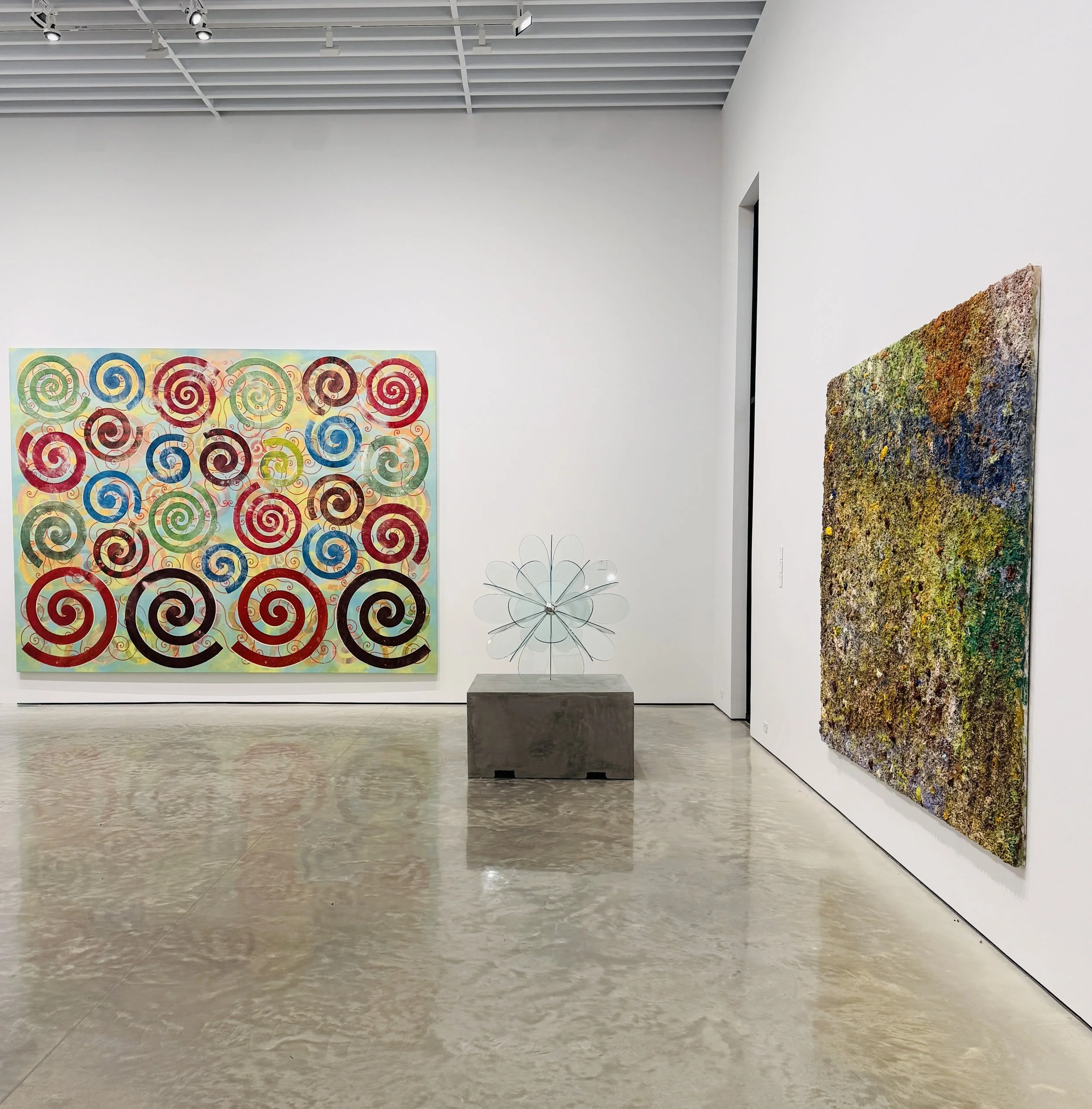'What’s Missing?' with Ellen Harvey and Gabriela Salazar at Olana, 'Stan Douglas: Ghostlight' at the Hessel Museum, and 'Summer Exhibition, 2025' at Morrison Gallery.
WHAT’S MISSING? Site-Specific Outdoor Works by Ellen Harvey and Gabriela Salazar at the Olana State Historic Site, through Fall, ‘26.
Installation view, Ellen Harvey, Winter in the Summer House, part of "What's Missing? Artworks in the Olana Landscape," Olana’s summer2025 outdoor site-specific exhibition. Photo: Peter Aaron / OTTO.
The 250-acre nature park designed by artist Frederic Edwin Church (1826-1900) to surround his Moroccan-inspired home and studio has been carefully preserved over the years, and remains one of the mid-Hudson Valley’s biggest tourist attractions. Yet the hallowed property has also undergone some changes that this year’s featured artists, Ellen Harvey and Gabriela Salazar decided to research and explore. They have focused on structures that seem to have disappeared from the place that Church envisioned, created and knew well.
Installation view, Gabriela Salazar, A Measure of Comfort (Cake and Cord). part of "What's Missing? Artworks in the Olana Landscape," Olana’s summer 2025 outdoor site-specific exhibition. Shown here: Cake. Photo: Peter Aaron / OTTO.
Harvey’s project, Winter in the Summer House recreates a mysterious building that is featured in the 1886 “Plan of Olana,” but there remains no evidence or historical record of it beyond that. Harvey has imaginatively recreated it as a dazzling gold, hexagonal structure with rows of windows trimmed in gold paint. The building’s interior is lined with translucent panels with meticulously engraved drawings of bits of clouds and landscapes inspired by the surrounding area that echo its shifting light, as well as the renditions of Church’s famous iceberg images. Salazar’s project, A Measure of Comfort (Cake and Cord), consists of two installations that reimagine Olana’s ice house and woodshed, fragments of whose foundations still exist. For Cake, Salazar’s arranged a series of metal trays that hold water or ice, and features an intricate metal overlay cut in the form of reflective rivulets that effectively evoke the Hudson River and its tributaries. Installed in a verdant meadow near the woodshed site, Cork consists of a network of dozens of small wood blocks set on the ground, with edges scorched in some areas to create shadowy effects and also allude to the notion of a carbon-less future. With these new works, both Harvey and Salazar aim to highlight the delicate and fraught ecosystems specific to Olana and to broader, global environmental concerns. —David Ebony
STAN DOUGLAS: GHOSTLIGHT through November 30, ‘25; and ALL MANNER OF EXPERIMENTS: LEGACIES OF THE BAGHDAD MODERN ART GROUP, through October 19, ‘25, at the Hessel Museum, CCS Bard Galleries, Annandale-on-Hudson, NY.
Stan Douglas, Still from Birth of a Nation, 2025, Five-channel video installation, 13:20 min, black-and-white and color, silent, Hessel Museum, Bard College. Commissioned by the Hartwig Art Foundation with the Brick, Los Angeles© Stan Douglas. Courtesy the artist, Victoria Miro and David Zwirner.
Fact and fiction, reality and fantasy, the historical truth and fanciful myth not only collide in Stan Douglas’s work, they intertwine, comingle and ultimately reanimate the present. Curated by Bard’s Center for Curatorial Studies artistic director Lauren Cornell, Stan Douglas; Ghostlight is an illuminating survey featuring forty large-scale photos, videos and installation pieces from the past thirty years. The show’s title piece, the first work on view, is a large 2024 photo of a nighttime stage-light—the ghostlight—basically a floor lamp with a naked lightbulb, traditionally placed at the center of the stage to help theatre workers on the nightshift see their way around. Steeped in superstition, the ghostlight also wards off ghosts and spirits that many still believe haunt the theater. They might also inhabit this exhibition in some form or other—if you let them. It therefore, serves as a fitting introduction to the recreations of historical moments and evocation of a haunted past that permeate the show. With meticulous detail and awe-inspiring technical prowess, the Canadian artist restages and photographs or films momentous historical events, such as the 1988 blackout in New York City, and the calamitous results of Hurricane Sandy in 2012, in his Backout series. And in a number of large-scale photos he reenacts moments of socio-political upheaval, such as the 2011 London riots following racially motivated police aggression. In an astonishing video Luanda-Kinhasa, Douglas recreates a 1970s recording session at the legendary Columbia Records recording studio, “The Church.” The centerpiece of the exhibition is Birth of a Nation, the premier of a five-channel video installation reconstructing D. W. Griffith’s pioneering but controversial 1915 film of the same name that has been condemned for its racist provocations. Here, Douglas follows certain formal attributes of Griffith’s work, but with a twenty-first century analytical viewpoint, ultimately confronts and deconstructs its abhorrent content.
Also of note at the Hessel this summer, All Manner of Experiments: Legacies of the Baghdad Modern Art Group is a striking exhibition that is one of the first to examine in depth the modernist experiments in art and architecture that were unfolding in Iraq from the late 1940s through the early ‘70s. Curated by Arab art scholar Nada Shabout, the exhibition features a wide range of paintings, sculpture, photos and videos and other documentary material that sheds light on this fascinating but little explored period in modern mid-Eastern art. —David Ebony
Installation view, ‘All Manner of Experiments: Legacies of the Baghdad Modern Art Group,’ CCS Bard Galleries, Bard College, 2025. Photo: Olympia Shannon.
SUMMER EXHIBITION, 2025, Morrison Gallery, Kent, Connecticut, through September 21, ‘25.
Installation view, ‘Summer Exhibition 2025,’ Morrison Gallery; showing Alice Aycock’s Cyclone, foreground. Photo Courtesy Morrison Gallery.
Found among the works on view this summer in the airy, spacious light-filled Morrison Gallery are some fine examples of classic, mainly abstract works by late avant-gardists like Ronald Bladen, Alexander Liberman and Kenneth Snelson. The highlights of the exhibition, however, are works by contemporary artists such as Alice Aycock, whose towering, spiraling aluminum sculpture Cyclone (2017), activates the gallery space with its countless layers of curvilinear strips of metal that seem to contract and expand with each look. The work indeed evokes the centrifugal force of a cyclone, and all of the alarming ecological implications those random and unpredictable weather events signify these days.
Installation view, ‘Summer Exhibition 2025,’ at Morrison Gallery, featuring paintings by Philip Taaffe (left), and Joel Longenecker (right), and sculpture by Norman Mooney (center). Photo Courtesy Morrison Gallery.
Formally, Aycock’s work corresponds potently with Philip Taaffe’s elegant, mural-scale composition Spiral Painting I (2014) hung on the opposite side of the gallery. Here, Taaffe’s layered patterns of colorful, translucent spirals are well behaved and hypnotic. Though unmistakably contemporary, they conjure the motif’s rarified and venerable origins in antiquity. Contrasting with the flat, austere surface of Taaffe’s work, Joel Longenecker’s trio of large-scale abstract oil compositions of rich impasto hung on an adjacent wall, appear almost like relief sculptures. Inspired by nature, but not beholding to its conventional visual manifestation, Longenecker offers by means of a unique visual language an exploration of and a meditation on the natural environment in terms of radiant color, and the pure sensuality of the densely layered surfaces. —David Ebony






